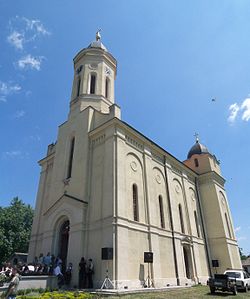
Ruma is a town and municipality in the Srem District of the Autonomous Province of Vojvodina, Serbia. As of 2011, the town has a population of 30,076, while the municipality has a population of 54,339.

Smederevska Palanka is a town and municipality located in the Podunavlje District and the geographical region of Šumadija. According to the 2011 census, the town has 23,601, while the municipality has 50,284 inhabitants.

Sopot is a municipality of the city of Belgrade. According to the 2022 census results, the town has a population of 1,956 inhabitants while the municipality has 19,126 inhabitants.
Banatsko Novo Selo is a village located in the municipality of Pančevo, South Banat District, Vojvodina, Serbia. The village has a Serb ethnic majority and its population numbering 7,089 people.

Benkovac is a town and municipality in the Zadar County, Croatia.

Topola is a town and municipality located in the Šumadija District of central Serbia. It was the place where Karađorđe, a Serbian revolutionary, was chosen as the leader of the First Serbian Uprising against the Ottoman Empire in 1804. The local St. George Church is the burial place of the Ducal and Royal Family of Serbia and Yugoslavia.

Bogatić is a town and municipality located in the Mačva District of western Serbia. As of the 2011 census, it has 28,843 residents.

Ub is a town and municipality located in the Kolubara District of western Serbia. As of 2011, the population of the town is 6,164, while population of the municipality is 29,022 inhabitants.

Crna Bara is a village in Serbia, in the Mačva region. Administratively it belongs to the municipality of Bogatić. According to the 2002 census, the village had 2,270 residents. It lies near the confluence of Drina river into Sava.
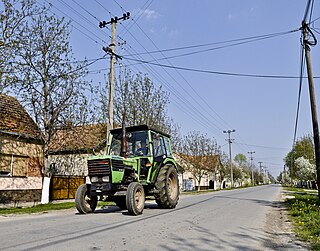
Vojka is a village in Vojvodina, Serbia, in the municipality of Stara Pazova.

Novaci is a village in the municipality of Ub, Kolubara District, Western Serbia. Total number of inhabitants is 711. The most important site in the village is the Church of the Nativity of The Most Holy Theotokos, built in 1857.

Bankovac is a village in Serbia situated in the municipality of Aleksinac, in the Nišava District. The population of the village is 178 people with Serbs as supermajority according to the 2002 census. According to the 1991 census it had 205 inhabitants.
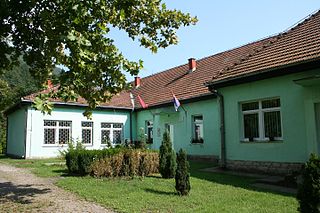
Amajić is a village in west-central Serbia. It is situated in the municipality of Mali Zvornik in the Mačva District of Central Serbia. The village is located on the banks of Zvornik Lake, a reservoir of the Drina River, on the international border between Serbia and Bosnia and Herzegovina. The population was 156 at the 2011 census.
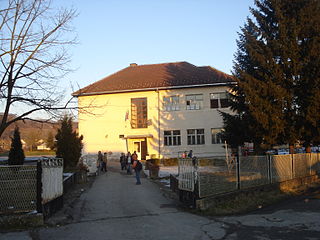
Donja Borina is a village in Serbia. It is situated in the Mali Zvornik municipality, in the Mačva District of Central Serbia. The village has a Serb ethnic majority and its population was 1,731 in 2002.

Brezovac is a village in the municipality of Aranđelovac, Serbia. According to the 2011 census, the village has a population of 688 people.
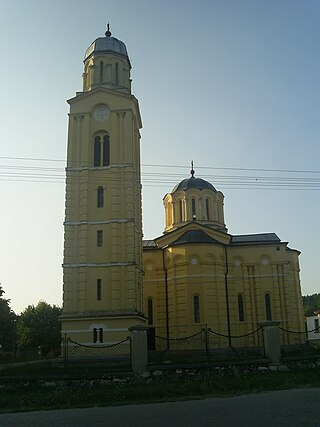
Badnjevac is a village in the municipality of Batočina in the Šumadija District of Serbia. The population was 1,084 in the 2011 census.
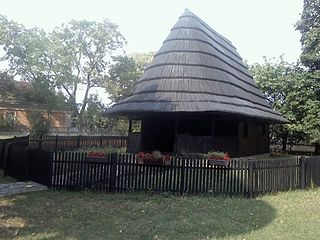
Brzan is a village in the municipality of Batočina in the Šumadija District of Serbia. The population was 1,754 in the 2011 census.
Grabovica is a village in the municipality of Gornji Milanovac, Serbia. The name derivates from the word grab ("hornbeam"). According to the 2011 census, the village had a population of 456 people.

Kamenica is a village in the administrative area of city of Kragujevac, Serbia. According to the 2011 census, the village has a population of 329 people.
Mala Vrbica is a village in the city area of Kragujevac, Serbia. According to the 2002 census, the village has a population of 203 people.
